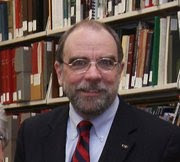Planning Local History Projects on the Web
I always thought that the best way to launch a big undertaking like creating the Cleveland Memory Project was to get all the issues planned in advance, to secure major outside funding, to research and select the best hardware and software, to train the staff in the new technology, to perform some dry runs and then digitize thousands of items before announcing the product. I call this the "Spanish Armada" approach, acknowledging the similar preparations that must have gone into sending that massive fleet off to war.Lacking the patience to do things the "right" way and eager to see what would work, I just started doing some local history web work in 1996 and gradually recruited other kindred souls on the CSU Library staff to join in. We made mistakes, back-tracked to undo unwise decisions, digitized whatever our whimsy led us to and generally made it up as we went along. I call that the "Dunkirk Model," where you just find something that will float and start paddling like crazy.
Our goal was to reach the New World of digital history as fast as possible. At any moment in the following decade, we expected to hear of a local Spanish Armada being launched, which would blow our effort out of the water, but it never sailed. Instead our fleet of collaborators just keeps growing and we're still operating in a whimsical fashion to a large degree, but we've discovered that this process is a whole lot more fun and is more sustainable, as we're not always worrying about where the next big grant's coming from to keep us afloat.
One outgrowth of this has been the Greater Cleveland History Digital Library Consortium, which will be meeting next on November 5th. The Consortium was formed from a meeting at CWRU in 2004 to help local institutions mount resources on the web about the region's history. Email me for details if you're interested.
Labels: Cleveland history, Cleveland Memory, digital humanities, Greater Cleveland History Digital Library Consortium, projects


0 Comments:
Post a Comment
<< Home